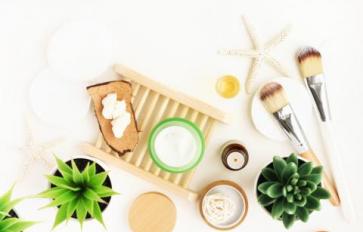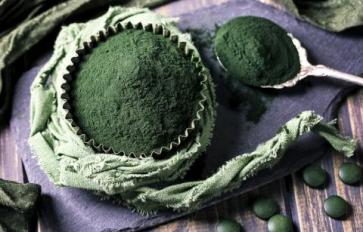
Certain chemicals can be very harmful to your endocrine system and can have a negative impact on your health. Unfortunately, some of these dangerous chemicals are used in common, everyday items. Here are four endocrine disruptors you need to avoid—and how to avoid them.
Triclosan
In 2016, triclosan, a toxic ingredient in antibacterial products, was banned from soaps by the Food and Drug Administration (FDA). The FDA gave companies one year to remove the toxic ingredient and take their products off the market. According to the FDA, manufacturers did not demonstrate that triclosan was safe for long-term daily use and more effective than plain soap and water in preventing illness and the spread of certain infections. Now that it's 2018, the ban is in full force. There's only one problem: Triclosan can still be found in toothpaste and some conventional cosmetics. The problem with this extends into the health risks triclosan causes: It's highly toxic and has been linked to immune and endocrine issues. It disrupts hormones in the body and also affects your muscles. A study published at the Proceedings of the National Academy of Sciences showed triclosan impairs muscles, including the heart. Who would want to risk using a product that contains an ingredient like that? Not me.
How to avoid triclosan:
Make sure to read the labels on everything you purchase: If you see triclosan as an ingredient, don't buy it. It can be found in toothpaste, cosmetics, and even some hygiene/beauty products (like bath products, deodorant, aftershave, shampoos, body sprays, and more). Be sure to avoid these at all costs and try to purchase natural products. Better yet, try DIY toothpaste since that's the most common product triclosan is still found in.
Phthalates
Phthalates are common in plastics such as packaging, cling wrap, and bags. Phthalates are added to plastics to make them stronger and more flexible. But believe it or not, they can also be found in personal items like soap, shampoo, hair spray, and nail polish. Phthalates can leach into your food and the environment, though diet is believed to be the main source of phthalate exposure: Fatty foods (like meat and dairy) tend to be packaged in them. They're also sometimes used as solvents in cosmetics, which can damage the liver, lungs, reproductive system, and kidneys. Phthalates have been linked to reproductive and endocrine-system issues. According to tests done by the Centers for Disease Control and Prevention (CDC), most Americans have multiple phthalates in their urine. Ew. If that's not bad enough, a 2003 study published in Environmental Health Perspectives suggests that environmental levels of phthalates (meaning prolonged exposure to plastic containing phthalates) are associated with altered DNA integrity in human sperm. Not exactly the best news in the world.
How to avoid phthalates:
To reduce your exposure to phthalates, simply avoid plastic. Do your best to purchase plastic-free items packaged in paper, cardboard, glass, or stainless steel. These are not only better for you, but better for the planet, too. Also, since phthalates can be found in some cosmetics, make sure you're reading ingredient labels thoroughly. If you see any phthalates in there, avoid it. Stay on the safer side and purchase natural cosmetics, or get crafty and make some DIY makeup.
Dixions
Dioxins are highly toxic compounds produced by burning waste or burning fuels (coal, oil, or wood), and bleaching of pulp or paper. Dioxins are also created by industrial activities like the manufacturing of pesticides and herbicides. Small amounts of dioxins can also be found in cigarettes (cigarette smoke specifically) and drinking water (due to discharges from chemical factories or emissions from waste incineration). Dioxins are highly toxic and can cause cancer, reproductive and developmental issues, damage to the immune system, and interference with hormones. They also pollute the environment and end up in our food supply. They have an extremely long-life span in the environment (and human body), taking over a decade to be released. This is why they collect in organisms and become more concentrated as they pass up in the food chain. Essentially, this means higher amounts of dioxins are present in meat, fish, shellfish, and dairy products. While regular testing of these foods occur to make sure the levels are "safe", sometimes mishaps occur. In late 2008, tons of pork in Ireland were recalled when it was found to have 200 times the safe level of dioxin. Apparently, the feed the animals were given was contaminated.
How to avoid dioxin:
To reduce your exposure to dioxins, enjoy a diet rich in plant foods and filter your water. Also, try to limit your exposure to cigarette smoke—if you do smoke, do your best to cut back or stop altogether (for your health and the environment’s). Do your best to avoid produce that has been treated and grown using pesticides and herbicides, seeing as the creation of these products contributes to dioxin creation as well. Plus, pesticides and herbicides on food (in general) are just not good for your health. I recommend gently detoxing several times per year, as you'll want to flush whatever amount of dioxin accumulates in your body over time.
BPA
You've probably heard of BPA before: Usually, you can spot it on cans that say they're "BPA free" in grocery stores. BPA can also be found in plastic # 7, which is used to make everything from sunglasses to 3- and 5-gallon water bottles. Many water bottles and food containers are made with BPA. First off, BPA stands for Bisphenol A: It's another chemical used to make plastics stronger. The dangers of BPA in plastic are well-researched (and all over the internet): The toxin leaches into foods and can lead to heart disease, reproductive issues, and liver disturbances. If that wasn't enough to make you cringe, Harvard professors found that after eating canned soup once a day for five days, participants’ levels of BPA were increased by 1,000 percent. That's because the cans were lined with BPA. It's also important to note that BPA bottles leach chemicals into the water they carry, just like BPA lined cans leach into food they carry. When the bottles are heated (like when they're left in a hot car or in a store's warm warehouse) they leach even more hazardous material.
How to avoid BPA:
Do your best to buy drinking water from glass bottles or get a reusable water bottle made from glass or stainless steel. Also, try to avoid getting canned food unless it clearly states it's BPA-free. That said, even BPA-free doesn't necessarily mean safe: Lots of manufacturers are just substituting BPA with other chemical stand-ins like bisphenol S (BPS), which has nearly identical hormone-mimicking effects as BPA. To play it safe, stick to buying fresh food and making your own soup, avoiding cans as much as possible. To preserve fresh food longer, learn how to can, pickle, and freeze your food without the need for plastic.








